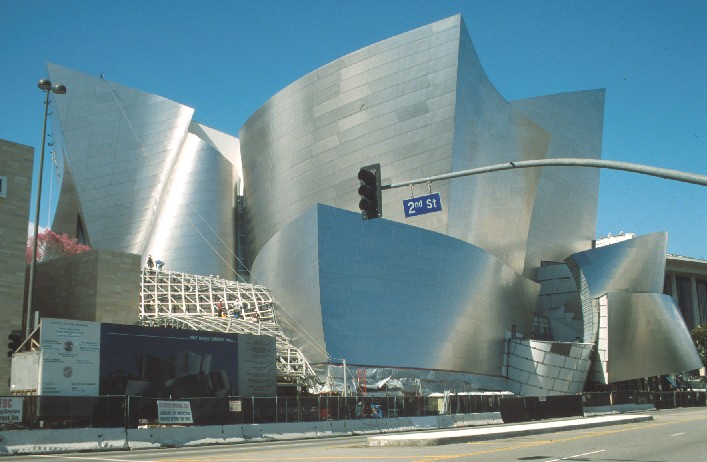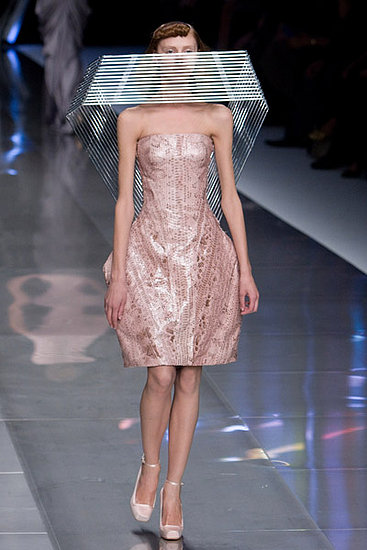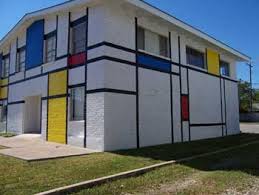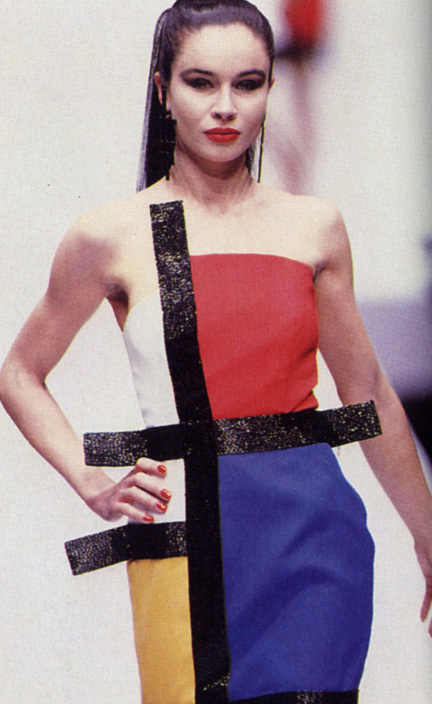Modernism was an era after WWI. It was the new age. It was a subjective response to a subjective experience (Modernity). The characteristics were;
Le Corbusier was an architect and designer famous for being one of the pioneers of what is now called modern architecture. Villa Savoy summed up the five point architecture. He lifted the bulk of the structure off the ground, supporting it by concrete stilts. The open floor plan, walls and the yard were the next points. The fifth point was the roof garden. It was a functional design and there were no unnecessary elements to it.
In this Calvin Klein show, women's home ready-to-wear designer, Francisco Costa showed all about modernism. Fashions sophistication took on the style and dress. It was a monopolistic design. These designs were a true representation of modernism. It was about minimalism, function and originality.


Postmodernism era started in the 60's and got a recognisable style in the 80's. It is the age of surrealism and form.





- Form followed function
- Experimentation
- Innovation
- Individuality
- Progress
- Purity
- Originality
- Seriousness
- Historical styles followed
- Rules followed
- Excitement
Le Corbusier was an architect and designer famous for being one of the pioneers of what is now called modern architecture. Villa Savoy summed up the five point architecture. He lifted the bulk of the structure off the ground, supporting it by concrete stilts. The open floor plan, walls and the yard were the next points. The fifth point was the roof garden. It was a functional design and there were no unnecessary elements to it.
In this Calvin Klein show, women's home ready-to-wear designer, Francisco Costa showed all about modernism. Fashions sophistication took on the style and dress. It was a monopolistic design. These designs were a true representation of modernism. It was about minimalism, function and originality.


- Form over function
- Recycle
- Team work
- Collaborations
- Mixing and blending different techniques
- Historical styles copied
- Non-serious
- No rules
- Exhaustion
The Guggenheim Museum is a museum of modern and contemporary art, designed
by Frank Gehry, built by Ferrovial, and
located in Bilbao, Basque Country, Spain. The curves on the building were to appear random. The
architect said that "the randomness of the curves are designed to catch
the light. When it was opened to the public in 1997, it was immediately
hailed as one of the world's most spectacular buildings in the style of Deconstructivism. It has a
structure that consists of radically sculpted, organic contours. Sited as it is
in a port town, it is intended to resemble a ship. Its brilliantly reflective titanium panels resemble fish scales, echoing the other organic life. Computer Aided Three Dimensional Interactive Application (CATIA) and visualizations were used heavily in the structure's
design.
This outfit is from spring 2008 collection of McQueen. The collection formed a wardrobe any drama queen would covet:
Hitchcockian suits, ombre kimono dresses, and lace inserts abounded. As always,
McQueen was daring with vertiginous Japanese geta-inspired sandals, rainbow
prints, and face-covering masks. But my favourite had to be the phoenix motif,
so appropriate because of its symbolism of rebirth. McQueen's designs were always over the top. They were more about the drama and from rather than their functionality. It was a great portrayal of surrealism.
Personally i prefer post modern designs. The unusual form, the freedom to show yourself and the crossing the boundaries is only possible in post modernism.
Personally i prefer post modern designs. The unusual form, the freedom to show yourself and the crossing the boundaries is only possible in post modernism.


This example is great way to show the link of all the areas. Mondrian's modernism paintings became an inspiration for YSL to show in a post modern way. It has also a representation in an architectural form. The beautification of this piece is the geometrical shapes and the minimal colors used.
Piet Mondrian was a Dutch painter. In his Composition series he used a combination of black lines and patches of primary colours. The black lines are the flattest elements, with the least amount of depth. The colored forms have the most obvious brush strokes, all running in one direction. The white forms clearly have been painted in layers, using brush strokes running in different directions. The lines are relatively thin and they are gray. The lines also tend to fade to edges. The colours were in larger proportion than white. As the years passed thick black lines separated the forms,
which were larger and fewer in number. He began extending the lines to the edges and he also began to use fewer and fewer colored forms, favoring white
instead. Italian couturier, Francesso Maria Bandini, piggybacks YSL and takes Mondrian’s modernist masterpiece into the 3rd dimension.


No comments:
Post a Comment